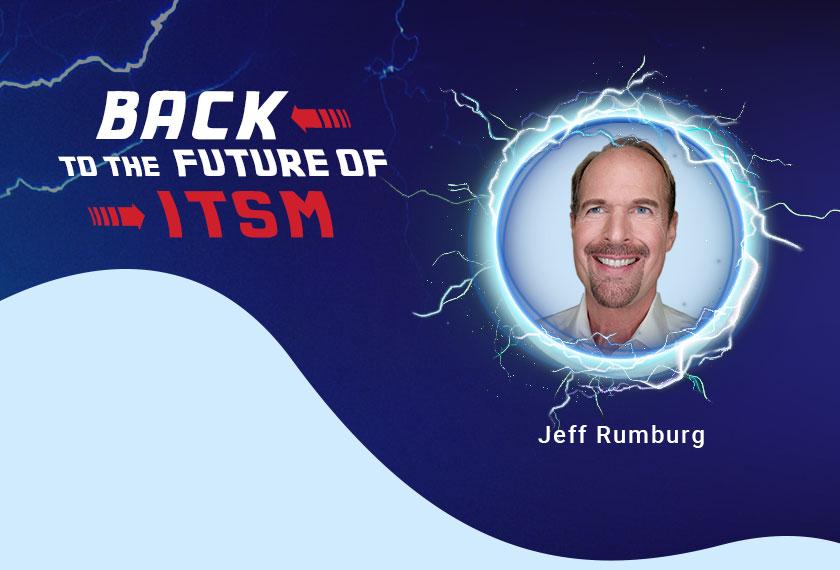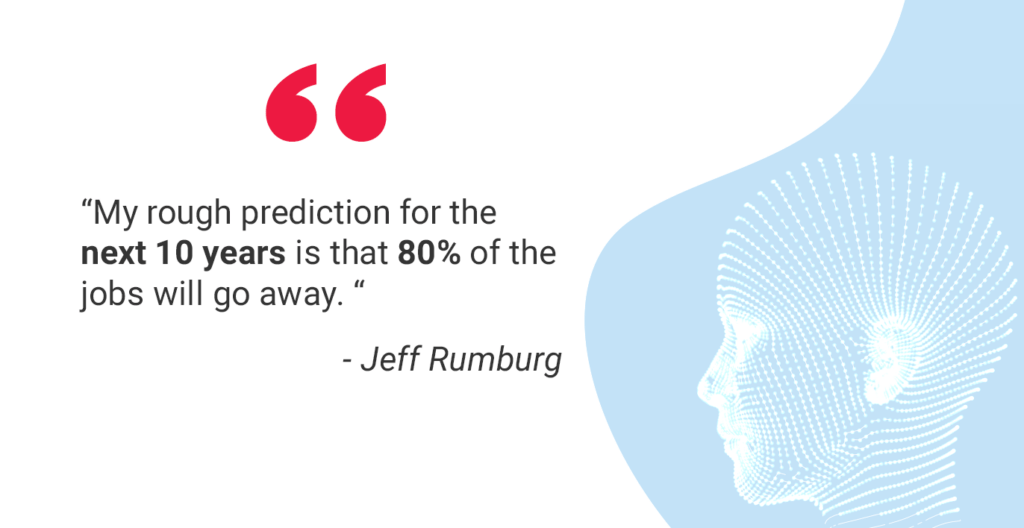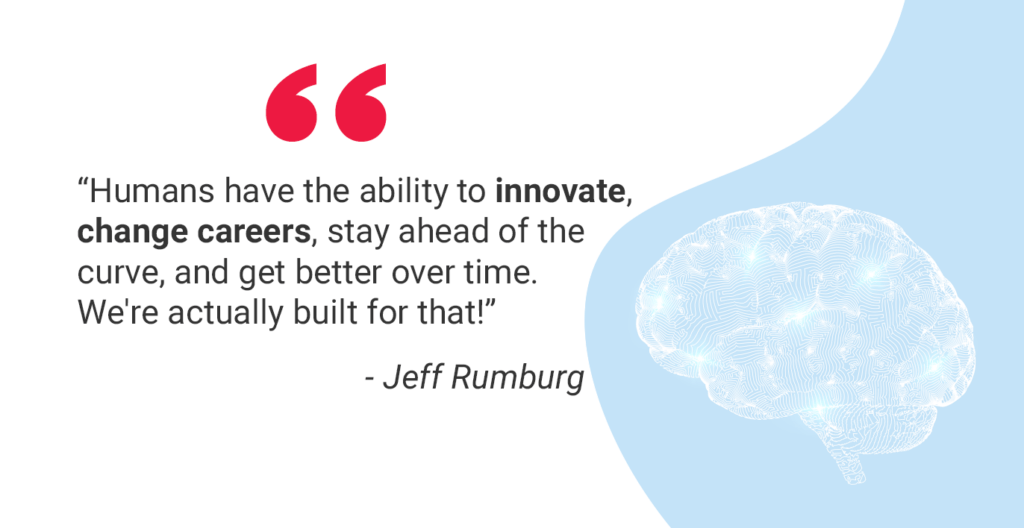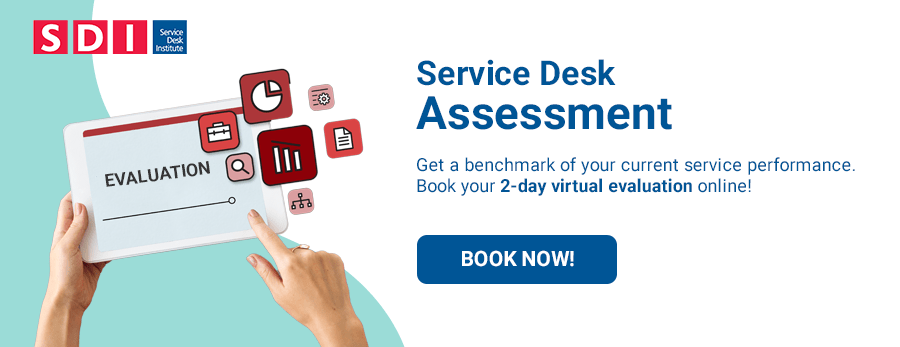
The time has come! We’re flying back to the future to discover new trend predictions for the IT & ITSM industry. Our blog series ‘Back to the Future of ITSM’ is all about: Looking backwards — moving forwards.
In part one of this blog series, we went back to the future with Jeff Rumburg, CEO & Managing Partner MetricNet LLC. We discussed some brilliant things about data-driven decision-making, and Jeff shared his expert insights into:
- Should all business decisions be data-driven?
- How should organisations leverage a large amount of data?
- Why should decisions be based on data and numbers, not feelings?
- What are some trends and predictions to look out for in 2023 and beyond?
…and much more!
This is what he had to say.
Should All Business Decisions Be Data-Driven?
If we are talking specifically about business decisions in IT and service support or broader business-based decisions, the answer is a little bit different.
Yes, I personally think every decision should be data-driven. However, there are about twenty qualifiers that come with that. Many people assume that data means accurate data, and that’s not true. Almost all data has some inaccuracies in it.
There is the leap from data to insight to action, and that process can break down at any point.
You may have data that is imperfect, an insight that is not accurate, or you may have no insight or have actions that are not justified based upon data.
So, the short answer is yes!
I think every decision should be data-driven. However, we must recognise the imperfections of data. Every decision is made under uncertainty – there are very few decisions that are not made under uncertainty. But that’s not a majority of business decisions or IT and service support decisions.
How should organisations leverage a large amount of data? And how do we know which data is really providing actionable insights?
Since most of the decisions are made of uncertainty, we have to view them probabilistically.
That means that we leverage the best data we have, or capture data if appropriate.
Then, based on that data that either exists or that we go out and capture, we make the best decision. A decision that we think is justified!
However, good decisions don’t guarantee good outcomes, and bad decisions don’t guarantee bad outcomes! That’s why we have to separate the decision from the outcome.
“The linkage between data, decision, outcome, and action is not hardwired.”
– Jeff Rumburg
Recognising the imperfections in data is very important. In general, good data leads to better decisions.
So, get the best data you can, make assumptions where necessary, extract the insight from that and make the best decision based on that insight.
That decision could be to do nothing, which is sometimes justified based on the data.
Action will then demonstrate whether the decision you made was a good or bad one.
If you have data, you should leverage it!
Do you think organisations have to incorporate customer feedback into their decision-making process? What decisions should be subject to customer feedback?
It depends really on what kind of decision is being made. An internal decision within ITSM, for example, around which ITSM tool to use or some HR decision, isn’t a customer issue. I think that’s an internal issue.
There are a lot of internal decisions that are made that don’t necessarily need to be subjected to customer feedback.
However, anything customer-facing, the delivery of service, the different channels you offer, the service catalogue, or the way customers can self-serve. I think that should be subject to customer feedback!
When to gather customer feedback?
So, when do you gather that feedback?
Do you put out a Minimally Viable Product (MVP) and wait for customer feedback to validate what you’ve done? Do you then iterate on that MVP and make it better over time?
Or do you do a whole bunch of research before you offer anything to the customer to try and get the best outcome possible?
I’m more in the former camp. If you believe that there is a need, for example, for the customer to have self-service and if you have some evidence that that would be beneficial to the customer – let’s launch it!
Do the best we can to ensure that it’s viable on day one, and then we can iterate, can make it better over time. There are a lot of decisions that don’t have a lot of data.
However, we do have some instinct or intuition right up front from those that work in IT service and support, as they hear every day from their customers.
For example, they wish the wait times weren’t so long that you would offer a call-back, SMS update or that service catalogue had this or that.
So, customer feedback is critical for continuous improvement because you don’t get better otherwise.
You can continuously improve in some cases without customer input, but in general, continuous improvement should be customer guided.
How To Make Decisions Based on Data and Numbers, Not Feelings
What should organisations be aware of to make sure their decisions are based on data and numbers, not feelings?
Let’s look at an example from outside the industry.
Steve Jobs always hated reports and never looked at data, but he had an amazing ability to anticipate what consumers wanted. Hence the launch of the iPhone, the iPad, the Mac computer, the iPod, and numerous other innovations.
They came right out of his brain.
He had an amazing ability to anticipate what consumers would like and not, but he’s extremely rare. His successor doesn’t make decisions that way at all. Everything he does is data-driven.
So, there are rare individuals in this world that can anticipate customer needs or consumer desires and act on that and produce these blockbuster services and products. But it’s pretty rare.
More often, they’re going to be data-based decisions.
Decisions should be backed by data, but it’s not as easy as it sounds because data is imperfect.
The culture of an organisation has a lot to do with this. It depends on whether an organisation is data-driven or sort of instinct-driven, or less data-driven.
So even if the data is imperfect, even if it’s flimsy, even if it’s incomplete, there should be something behind the decision.
These rare Steve Jobs-type geniuses are few and far between, and I think most mortal men and women should be basing their decisions on the best available data they have.
Trends and Predictions to Look Out for in 2023 and Beyond
Where do you see the digital workplace going on in the future?
Well, I would say more of the same. But the trajectory is likely to accelerate. It’s not slowing down. Workers are more mobile than ever, and for that reason, they’ve been empowered.
Most of the workforce in developed countries are knowledge workers.
If you’re a knowledge worker, most of your work is done on a computer. So, we can expect more of the same in terms of the workplace going digital.
However, because workers are more mobile than ever, they’re going to go where they’re treated best, sometimes friendlier tax jurisdictions, sometimes companies with better compensation.
What trends should we expect?
The technology’s already good enough, so AI and machine learning will displace most jobs in the next 10 years.
Most of the driving jobs are already going away. For example, Uber already has some self-driving cars in certain cities around the world. But this is just one example of a human labour job that could be displaced by AI.

This doesn’t mean that 80% of the population of the world will be unemployed. Humans will innovate.
They will find new things to do, specifically as it relates to IT, service, and support, much like the auto industry. There’s almost no manual labour that goes into making a car today. It’s less than 1% of what it was in the 1960s. So, all those jobs were automated away, but the industry hasn’t gone away.
By the same token, those that work in service and support they’re not going to be doing password resets and Microsoft Office and Windows and Outlook support 10 years from now.
All that will be consumed by either robotic process automation, meaning voice and chatbots or machine learning and AI.

The professionals that are left are going to be not technicians, not agents, not analysts, but they will be engineers who are smarter than the bots, smarter than the voice and chatbots and smarter than the AI.
The best thing an individual can do is work on themselves. Train themselves, learn a new skill, and stay ahead of the curve in IT service and support.
Be one of that 20% that stays ahead of machine learning and AI because that will eventually open new frontiers even beyond that.
About author:
Jeff Rumburg, CEO & Managing Partner MetricNet LLC. A leading expert in benchmarking and re-engineering and author of a bestselling book on benchmarking.




























